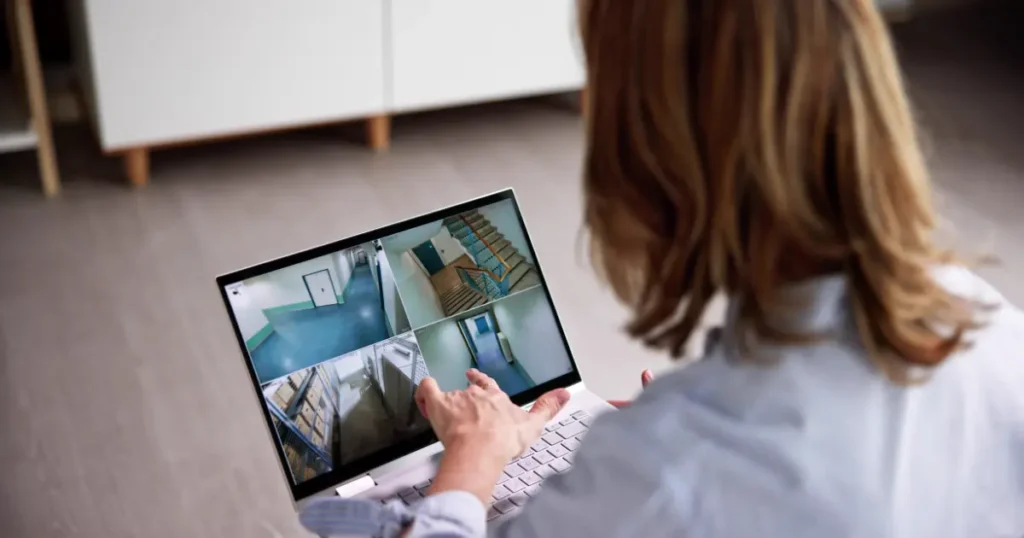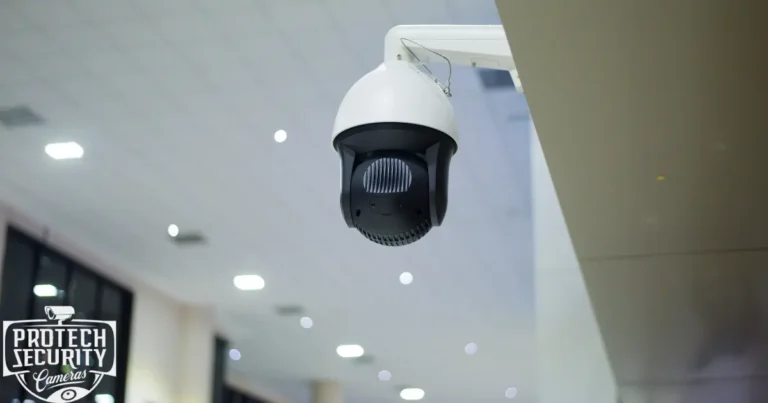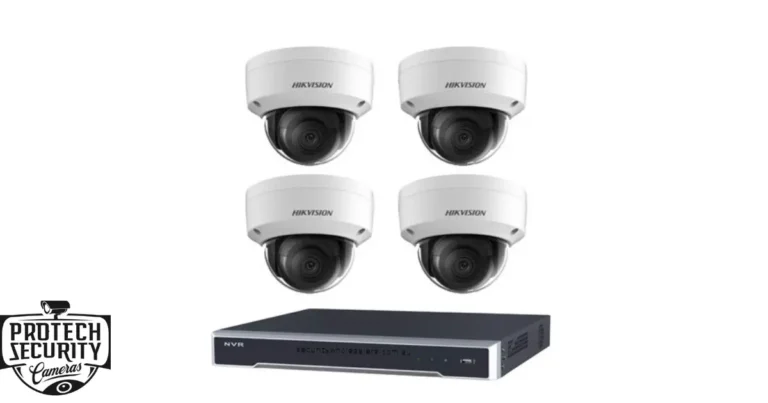In today’s fast-paced and unpredictable world, ensuring the safety and security of our homes, businesses, and public spaces has become a top priority. The security surveillance camera is one of the most effective tools. However, it’s also essential to consider the potential health risks associated with these devices. From deterring crime to providing valuable evidence in the event of an incident, security cameras play a crucial role in modern security strategies. In this article, we’ll explore the importance of security surveillance cameras, their various types, key features, and best practices for installation and maintenance. We’ll also discuss their potential health effects and how to mitigate them.
The Importance of Security Surveillance Cameras
Deterrence of Criminal Activity
The mere presence of security cameras can be a powerful deterrent to potential criminals. Knowing that their actions are being monitored and recorded makes would-be offenders think twice before engaging in illegal activities. This preventive measure, which you can implement, helps reduce the incidence of theft, vandalism, and other crimes, giving you a greater sense of control over your security.
Evidence Collection
In the unfortunate event of a crime, security cameras provide invaluable evidence that can aid law enforcement in identifying and apprehending perpetrators. High-definition footage from security cameras can also be used in court to support legal proceedings, making it easier to achieve justice.
Monitoring and Management
Security cameras allow for real-time monitoring of activities within a property. Whether it’s a retail store, office building, or residential complex, surveillance cameras help ensure everything runs smoothly. They can also monitor employee productivity, customer behavior, and operational efficiency.
Remote Access
Modern security cameras have remote access capabilities, allowing property owners and managers to view live footage from anywhere in the world. This feature is particularly beneficial for business owners who need to monitor multiple locations or for homeowners who travel frequently.
Enhanced Safety
Security cameras contribute to an environment’s overall safety by providing constant surveillance. They help prevent incidents before they escalate and ensure a rapid response in emergencies, creating a safer atmosphere for residents, employees, and visitors.
Types of Security Surveillance Cameras
Security cameras come in various shapes and sizes, each designed for specific purposes. Here are some of the most common types, along with a comparison of famous brands or models:
Dome Cameras
Dome cameras are named for their dome-shaped housing, which makes them less conspicuous and harder for intruders to tamper with. They offer a comprehensive view and are suitable for indoor and outdoor use. Dome cameras are ideal for monitoring large areas such as parking lots, building entrances, and open spaces within a facility.
Bullet Cameras
Bullet cameras are easily recognizable by their long, cylindrical shape. They are typically mounted on walls or ceilings and are designed for long-range viewing. These cameras are weatherproof, making them perfect for outdoor surveillance. Bullet cameras monitor perimeters, driveways, and other expansive outdoor areas.
PTZ Cameras
Pan-tilt-zoom (PTZ) cameras offer flexible monitoring options. They can rotate, tilt, and zoom, providing comprehensive coverage of large areas. PTZ cameras are ideal for locations that require detailed surveillance, such as warehouses, large retail spaces, and industrial facilities. They can be controlled remotely, allowing users to focus on specific areas of interest.
Wireless Cameras
Wireless cameras offer the convenience of easy installation and flexibility. They connect to the internet via Wi-Fi and can be monitored remotely from a smartphone or computer. They are suitable for indoor and outdoor use and are popular among homeowners and small businesses.
Hidden Cameras
Hidden cameras, also known as covert cameras, are designed to blend seamlessly into their surroundings. They are ideal for discreet surveillance and can be placed in everyday objects such as clocks, smoke detectors, and light fixtures. Hidden cameras are often used in retail environments, offices, and homes to monitor sensitive areas without drawing attention.
Thermal Cameras
Thermal cameras detect heat signatures and monitor in low-light or no-light conditions. They are handy for perimeter security and detecting intruders in total darkness. Thermal cameras are commonly used in critical infrastructure, military installations, and border security.
Key Features of Security Surveillance Cameras
When choosing a security camera, it’s essential to consider the features that will best meet your security needs. Here are some key features to look for. By understanding these features, you can make an informed decision and feel confident that you are choosing the right security camera for your needs.
High-Definition Video
The quality of the video footage is crucial for identifying details such as faces, license plates, and other important information. High-definition (HD) cameras provide clear, detailed images, making recognizing and investigating incidents easier.
Night Vision
Night vision capabilities allow cameras to capture clear footage in low-light or no-light conditions. Infrared (IR) LEDs are commonly used in night vision cameras to illuminate the monitored area. This feature is essential for 24/7 surveillance.
Motion Detection
Motion detection technology triggers recording and alerts when movement is detected within the camera’s field of view. This feature helps conserve storage space and ensures that only relevant footage is captured. It also enables real-time alerts to notify users of potential security breaches.
Remote Viewing
Remote viewing allows users to access live and recorded camera footage via a smartphone, tablet, or computer. This feature provides convenience and instills a sense of peace of mind, as users can monitor their property anywhere, anytime, knowing they have an extra layer of security.
Two-Way Audio
Two-way audio enables communication between the camera and the person being monitored. This feature is helpful for remote interactions, such as greeting visitors or warning intruders. It’s also valuable for monitoring and communicating with employees or family members.
Wide Dynamic Range (WDR)
WDR technology enhances the camera’s ability to capture details in both bright and dark areas of the scene. This feature is handy in environments with varying lighting conditions, such as entrances with solid sunlight or shaded areas.
Weatherproof and Vandal-Resistant Housing
For outdoor cameras, choosing models with weatherproof and vandal-resistant housing is essential. These features ensure that the cameras can withstand harsh weather conditions and resist tampering or damage by intruders.
Best Practices for Installation and Maintenance
To maximize the effectiveness of your security surveillance system, it’s essential to follow best practices for installation and maintenance. However, knowing security cameras’ potential risks and vulnerabilities is also important. Unauthorized individuals could access your camera footage if you do not adequately secure it. Here are some tips to help you start:
Strategic Placement
Carefully consider the placement of your cameras to ensure optimal coverage. Position cameras at entry and exit points, high-traffic areas, and other critical locations. Avoid placing cameras too high or too low, and ensure they have a clear line of sight without obstructions.
Proper Wiring and Connectivity
Ensure you install the wiring correctly and protect it from damage for wired cameras. For outdoor installations, use weatherproof cables and secure them to prevent tampering. For wireless cameras, provide a solid and stable Wi-Fi connection to avoid interruptions in monitoring.
Regular Maintenance
Regular maintenance is essential to keep your security cameras functioning optimally. Clean the camera lenses periodically to ensure clear footage. Check for firmware updates and install them to improve performance and security. Inspect the cameras for any signs of damage or wear and tear, and address any issues promptly.
Secure Storage
Choose a reliable storage solution for your recorded footage. Network Video Recorders (NVRs) and Digital Video Recorders (DVRs) are standard options for local storage. Cloud storage offers remote access and backup but may involve additional costs. Ensure that your storage solution is secure and provides sufficient capacity for your needs.
Data Privacy and Security
Protecting the privacy and security of your surveillance data is crucial. Use strong passwords and encryption to secure your cameras and storage devices. Limit access to authorized personnel only and regularly review access logs. Be aware of privacy laws and regulations in your area to ensure compliance.
Professional Installation
Although some may opt for DIY installation, professional installation ensures the correct setup and optimal coverage and performance for your security cameras. Professional installers have the expertise to address challenges and provide valuable advice on system configuration and maintenance.
Conclusion
Security surveillance cameras protect homes, businesses, and public spaces. They deter criminal activity, provide valuable evidence, and enhance overall safety. With a wide range of camera types and advanced features, there is a security solution for every need. By following best practices for installation and maintenance, you can ensure that your surveillance system remains effective and reliable. Whether you install the cameras yourself or seek professional assistance, investing in a quality security surveillance system is a wise decision that pays off in peace of mind and enhanced security.



